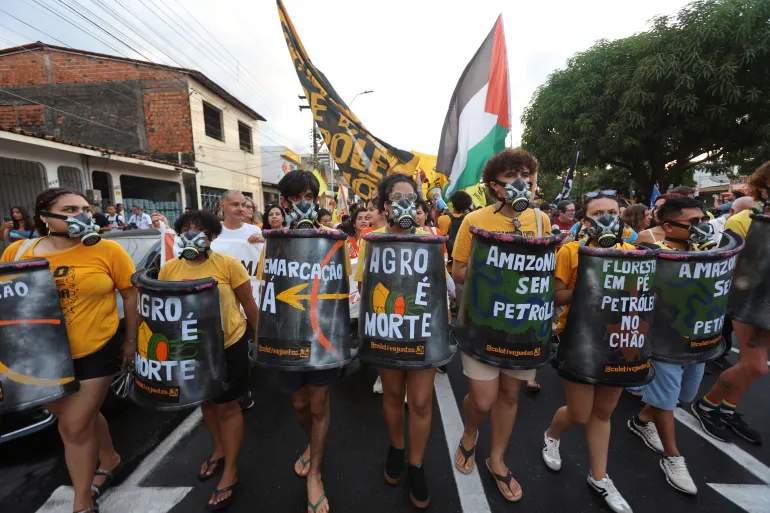At the Dubai Air Show 2025, Russia signaled a major step in its longstanding defense partnership with India, offering not just the supply of its advanced Su-57 stealth fighter jets but also a pathway for gradual production transfer to Indian facilities. Sergey Chemezov, CEO of Rostec, Russia’s state-owned defense conglomerate, highlighted Moscow’s commitment to supporting India’s defense modernization and maintaining the decades-long strategic relationship between the two countries.
“India and Russia have been partners for many years. Even when India was under sanctions, we supplied the country with weapons to ensure its security. Today, we continue the same approach as in previous years, supplying India with whatever military equipment it needs and ensuring our mutual interests in developing cooperation,” Chemezov told ANI on the sidelines of the air show. His remarks underscored Russia’s intent to remain a reliable supplier and collaborator in India’s defense sector, even as New Delhi seeks to diversify its military acquisitions.
Chemezov also addressed questions about ongoing defense procurements, including additional S-400 air defense systems and the Su-57 fighter jets. “We have strong relations with India, and whatever India requires, we are here to support,” he affirmed. His comments coincided with Indian External Affairs Minister S. Jaishankar’s visit to Russia, during which he met with President Vladimir Putin, Foreign Minister Sergey Lavrov, and attended the Shanghai Cooperation Organisation (SCO) heads-of-government summit, signaling active high-level engagement between the two countries.
The Su-57 is Russia’s fifth-generation, twin-engine stealth multirole fighter, designed to rival U.S. F-35 jets. It is capable of air superiority and ground attack missions, featuring advanced avionics, low-observable stealth technologies, and the ability to carry both conventional and precision-guided munitions. With India’s growing requirement for next-generation fighter aircraft, the Su-57 presents a potentially significant addition to the Indian Air Force’s modernization plans.
Vadim Badekha, Director General of the United Aircraft Corporation (UAC), a subsidiary of Rostec, noted that India’s concerns and technical requirements regarding the Su-57 had been carefully considered. Rosoboronexport, Russia’s state arms exporter, further elaborated on the offer, stating that India would not only receive Su-57 aircraft produced in Russia but could also eventually transition to domestic production in stages. This includes license production of air-launched weapons for future-generation aircraft, as well as integration of Indian-made weapon systems into the platform.
The proposed technology transfer package extends beyond airframe assembly. According to Rosoboronexport, India could gain access to advanced Russian technologies, including engine design, optics, active electronically scanned array (AESA) radars, artificial intelligence-enabled avionics, low signature stealth capabilities, and modern air-launched weapons systems. This represents one of the most comprehensive transfer-of-technology (ToT) offers that Russia has made to India for its fighter aircraft programs to date.
The move aligns with India’s broader strategic goal of strengthening indigenous defense production while continuing collaboration with trusted international partners. India has been actively pursuing initiatives to develop domestic defense capabilities under programs like Make in India, and the Su-57 offer could serve as both a short-term acquisition solution and a long-term platform for technological learning.
Historically, Russia has been a key defense partner for India, providing critical hardware ranging from MiG and Sukhoi fighter jets to missile systems such as the S-400 Triumf. The proposed Su-57 deal would build on decades of operational and technical cooperation, while also enabling India to advance its strategic autonomy by learning next-generation technologies for potential integration into future indigenous aircraft programs.
The timing of the announcement at the Dubai Air Show also reflects the global geopolitical context. India is actively diversifying its defense procurement sources while maintaining longstanding ties with Russia. With China’s rapid military modernization in the region and the United States strengthening strategic partnerships in the Indo-Pacific, India continues to balance capability enhancement with diplomatic engagement. The Su-57 offer represents a tangible way for India to bolster its air combat edge while deepening technological cooperation with a trusted partner.
Industry experts suggest that the staged production transfer could have multiple benefits. In addition to expanding India’s technological base, it could create skilled employment opportunities in aerospace manufacturing, strengthen supply chains for high-end fighter components, and facilitate future collaboration on indigenous fighter projects. Analysts note that access to Su-57 technologies, particularly engines, AESA radar, and stealth features, could accelerate India’s ongoing efforts to develop advanced fighter aircraft and integrate state-of-the-art avionics and weapons systems into homegrown designs.
While discussions are at an early stage, the Dubai Air Show announcement demonstrates Russia’s intent to reaffirm its defense partnership with India at a time when global defense landscapes are evolving rapidly. Both sides are expected to continue detailed talks on pricing, technology transfer modalities, production timelines, and integration of Indian systems with the Su-57.
In summary, Russia’s Su-57 offer to India at the Dubai Air Show represents a significant milestone in the two countries’ defense relationship. It combines immediate supply with the potential for progressive technology transfer, enabling India to enhance its air combat capabilities and simultaneously expand its indigenous defense production base. With continued negotiations, this deal could shape the next decade of India-Russia defense collaboration, advancing India’s strategic autonomy and operational readiness in the region.


Leave a Reply